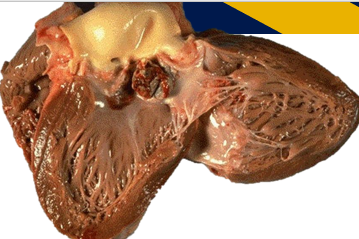Jaundice
Introduction:
Jaundice is a pathological process of bilirubin metabolism. Bilirubin a catabolic product of the "heme" part of hemoglobin. Naturally, bilirubin is yellow in color. That's why our body color change to yellower in jaundice. Usually occur >2.5 mg/dL of bilirubin in serum.
Normal bilirubin metabolism:
RBCs are consumed by macrophages after their life span (120 days) by the reticuloendothelial system. During this process, hemoglobin present in RBCs will get disintegrated to heme+globin. From the heme part, protoporphyrin is converted to unconjugated bilirubin (UCB). Albumin will take this UCB to the liver. In the liver, we have an enzyme called Uridine Glucuronly Transferase (UGT) in the hepatocyte. This enzyme will convert the UCB to conjugated bilirubin (CB).
This CB will transfer to the bile canal and forms the bile, which will store in the gall bladder. When the digestion in the small intestine begins, the bile will be released from the gall bladder. The intestinal flora converts the CB to Urobilinogen. This in turn oxidized to stercobilin and urobilin. Mostly stercobilin will be execrated in the stool (cause the stool brown in color) and urobilin will be partially reabsorbed into the blood and filtered by the kidney. This will excrete in the urine makes the color yellow.
Medical important properties of UCB & CB:
UCB is not water-soluble, hence absent in urine. But it is fat-soluble. CB is water-soluble.
Extravascular hemolysis:
Increase in hemolysis, increase bilirubin metabolism followed by RBC catabolism. This causes a high level of UCB to overwhelm the conjugating ability of the liver. Dark urination due to high urobilinogen in urine.
Physiologic jaundice for the newborn:
In the case of newborns, their UGT in hepatocyte transiently low. This causes high UCB in the serum. As UCB is fat-soluble, it will get deposit in the basal ganglia called kernicterus lead to neurological defect and sometimes death.
Dubin-Johnson syndrome:
The main concept of this syndrome is the deficiency of bilirubin canal transport protein. This will cause a high CB in the serum. The liver will be dark in color. Rotor syndrome is similar to Dubin-johnson syndrome, but the difference is that in Rotor syndrome discoloration of the liver will be absent.
In Gilbert and Cigler-Najjar syndrome, low and absent of UGT respectively. Cause high UCB lead jaundice during stress and Kernicterus respectively.
Bile tract occlusion:
Block of bile track is associated with gallstones, pancreatic carcinoma, Cholangiocarcinoma, Parasites, and liver fluke. This causes high CB and bilirubinuria. In this condition, plasma bile acids will be increased, Xanthomas steatorrhea with malabsorption of fat-soluble vitamins cause pale stool.






Good Afternoon Sir !
ReplyDeleteI have a doubt sir , why indirect bilirubin is called as UNCONJUGATED BILIRUBIN ?
We say if the protein is joined with another chemical group it is known as conjugated protein . Then why in this scenario , they are calling this as a " UNCONJUGATED BILIRUBIN"?
Here Albumin is binded with bilirubin right?